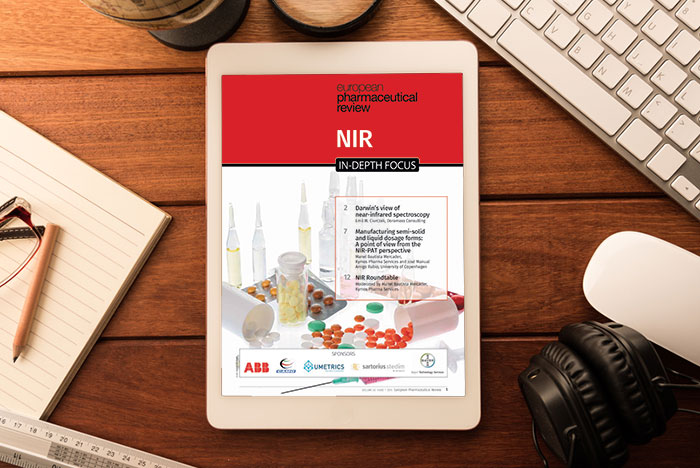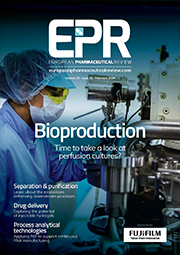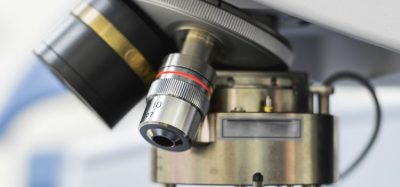Near-Infrared Spectroscopy (NIR): In-Depth Focus 2015
Posted: 19 February 2015 | European Pharmaceutical Review
This free-to-view NIR In-Depth Focus reveals the fascinating evolution and future perspectives of near-infrared technology in the lively opening article, plus we examine the benefits of combining NIR spectroscopy with process analytical technology…


- Darwin’s view of near-infrared spectroscopy
Emil W. Ciurczak, Doramaxx Consulting
The question has been posed: “If near-infrared (NIR) is such a potent technique, why has it taken so long to become a force in pharma?” This is a simple question, but has a complex answer. As in nature, changes do not happen without external pressure. Giraffes didn’t, for example, grow long necks because they like necklaces; they evolved to take advantage of the hors d’oeuves on the tops of trees, places rival animals cannot reach. Likewise, spectroscopic techniques evolved as the combination of need and technologies combined. As sources, detectors, and wavelength selectors became better and less expensive, more and more potential uses of NIR were ‘discovered’… - Manufacturing semi-solid and liquid dosage forms: A point of view from the NIR-PAT perspective
Manel Bautista, Mercader Kymos Pharma Services / José Manuel Amigo Rubio, University of Copenhagen
Near-infrared spectroscopy (NIRS) has established itself as an analytical technique that is increasingly used in pharmaceutical production as a consequence of its high performance and versatility. Nowadays, almost all pharmaceutical companies have a NIR spectrometer in their facilities, either for controlling the quality of raw materials or for assessing the correct manufacture of the end product and many companies have replaced the tedious chromatographic methods in the registration dossier. It is without doubt that considerable effort, time and resources have been invested to promote an understanding of the numerous benefits of NIRS, which include low analysis times (even with real-time responses), an increase in efficiency and cost reductions. This was in part brought about by the process analytical technology (PAT) movement, which encouraged the pharmaceutical industry to improve manufacturing procedures by implementing new strategies that permit the full understanding of the overall manufacturing process, from the raw materials stage to the release of product, to ensure the quality of the final product. This article will give an overview of the key points, benefits and weaknesses for the implementation of NIR and PAT strategies during the manufacturing process for liquid and semi-solid products… - Near-Infrared Spectroscopy Roundtable
Featuring: Frédéric Despagne PhD, Industry Manager – Life Sciences and Specialty Chemicals, Measurement & Analytics, ABB / Jakob Christensen, Senior Application Specialist, MKS Umetrics AB / Dr. Marek Hoehse, Scientist R&D PAT, Sensors & Chemometrics, Sartorius Stedim Biotech GmbH / Dr. Geir Rune, Flaaten Business Development Director, Europe, CAMO Software AS
Moderated by Manel Bautista Mercader, PAT Project Manager, Kymos Pharma Services…
This Near-Infrared Spectroscopy (NIR) In-Depth Focus is restricted - login or subscribe free to access


Why subscribe? Join our growing community of thousands of industry professionals and gain access to:
- bi-monthly issues in print and/or digital format
- case studies, whitepapers, webinars and industry-leading content
- breaking news and features
- our extensive online archive of thousands of articles and years of past issues
- ...And it's all free!
Click here to Subscribe today Login here
Issue
Related topics
Related organisations
ABB, Bayer Technology Services, CAMO, Doramaxx Consulting, Kymos Pharma Services, Mercader Kymos Pharma Services, Sartorius, Umetrics, University of Copenhagen






